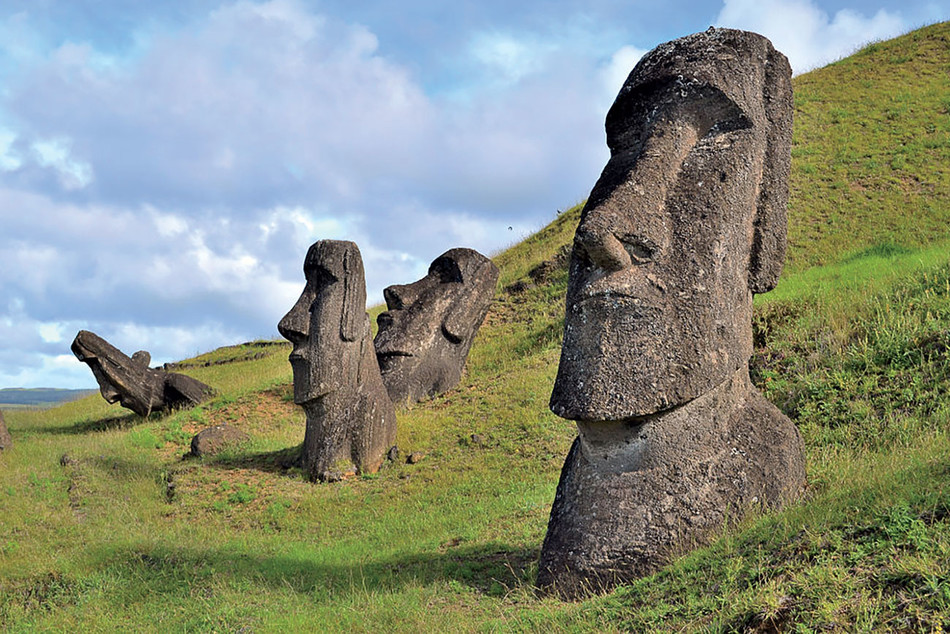A millennium ago, a brave group of Polynesians sailed thousands of miles across the Pacific to settle one of the world’s most isolated places — a small, previously uninhabited island they named Rapa Nui. There they erected hundreds of “moai,” or gigantic stone statues of ancestral spirits, to protect them. In time, the island population ballooned to fifteen thousand souls or more, which proved to be unsustainable. They killed off the island’s seabirds, exhausted its soils, and chopped down its trees. Consequently, the civilization collapsed, and when Europeans arrived in 1722 and renamed the place Easter Island, only a few thousand people remained. At least that is the long-told story, recounted in academic papers and popular books like Jared Diamond’s 2005 Collapse.
A new study by Columbia archaeologist Dylan Davis challenges this narrative, claiming that the Rapa Nui people did not overpopulate the island but rather maintained a small and stable settlement right up until the Europeans arrived. The evidence: a comprehensive survey of the island’s farmland that indicates that its inhabitants grew only enough crops to feed four thousand people at any given time.
“This shows that the population could never have been as big as some of the earlier estimates suggested,” says Davis, who is a postdoctoral research fellow at the Columbia Climate School.
Davis and his colleagues were able to calculate the islanders’ agricultural productivity because their farming method — scattering broken rocks in fields to protect small plants from wind and ocean spray — left an enduring archaeological record. Mapping these “rock gardens” has long been regarded by scientists as a valid way to estimate Rapa Nui crop yields. But Davis and his colleagues developed a new, highly sophisticated analytic approach that produced vastly different results. First, members of the research team conducted detailed on-the-ground investigations of Easter Island’s rock gardens, painstakingly documenting their geological characteristics. Then they trained a series of machine-learning models to analyze satellite images of the island and detect any patches of land that had historically been used for rock gardening. Whereas simpler satellite-based analyses conducted by other groups had previously estimated that anywhere from 2 to 12 percent of the landscape had once been used for growing food, Davis’s team determined that less than one-half of 1 percent of the island, or about 188 acres, had been cultivated.
“There are natural rock outcrops all over the place that had been misidentified as rock gardens in the past,” says Davis, whose coauthors include Robert DiNapoli of Binghamton University, Terry Hunt of the University of Arizona, and independent Rapa Nui researcher Gina Pakarati.
The new study is likely to intensify a scholarly debate that has been brewing for years about the history of the Rapa Nui people. Traditionally held up as a cautionary tale of how unchecked population growth and consumption can lead to ecological ruin, the islanders’ experience now reads to some as an ecological success story, one in which people found creative ways to thrive in a previously barren environment. For example, Davis and his coauthors point out that rock gardening, in addition to protecting crops from the elements, causes phosphorus, potassium, and other crucial minerals to leach out of broken stones and into the ground, thus maximizing the potential of the volcanic island’s nutrient-poor soil.
“The lesson is the opposite of the collapse theory,” says Davis. “People were able to be very resilient in the face of limited resources by modifying the environment in a way that helped.”



